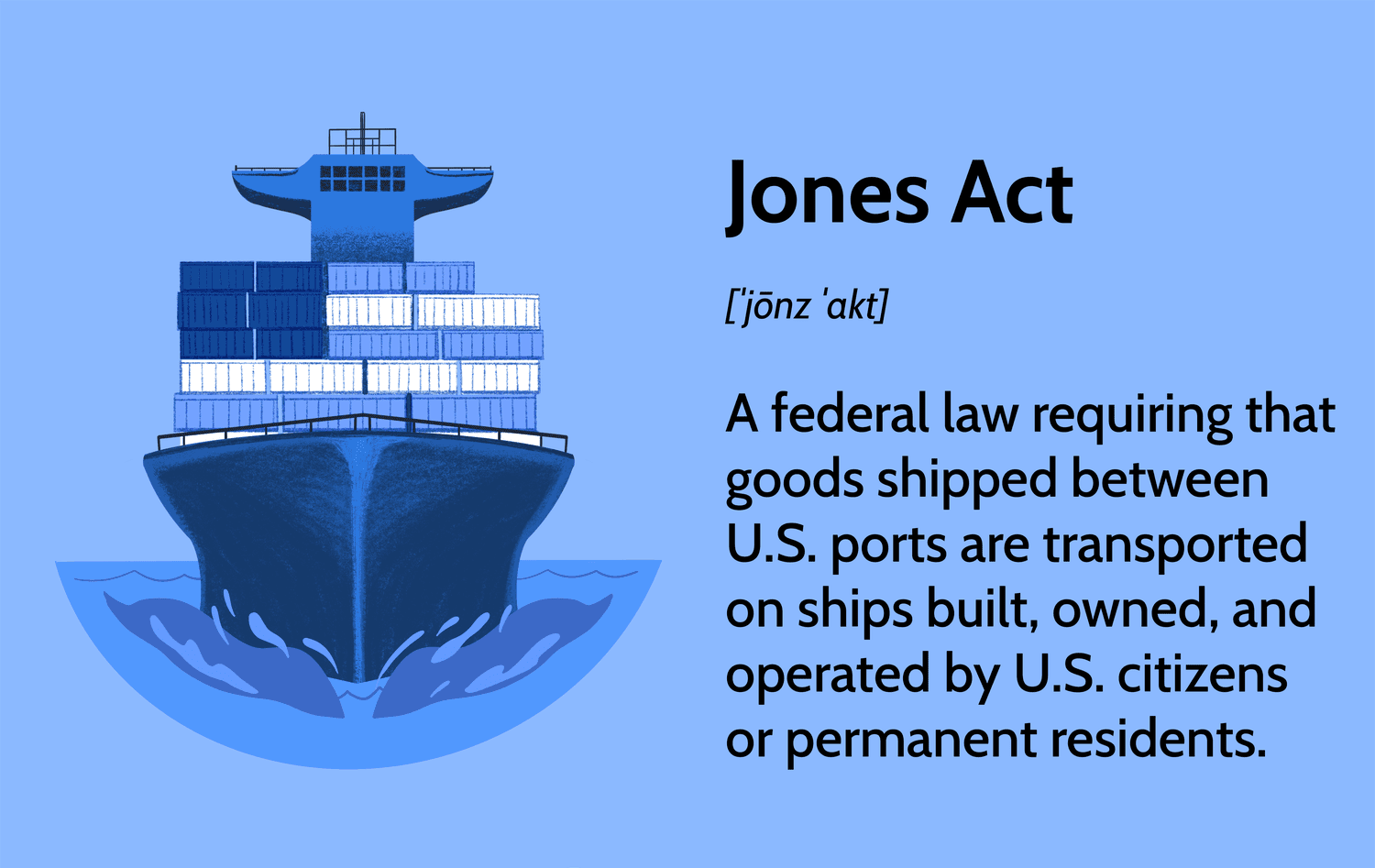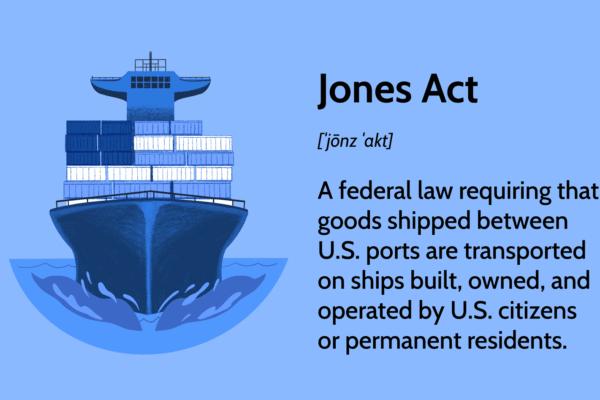
Seamen Rights Under the Jones Act: Legal Help You Need to Know
For the men and women who work the open seas—from deckhands and engineers to fishermen and commercial divers—the workplace is inherently more dangerous and unforgiving than any land-based job. When an injury occurs, their financial future hinges on a powerful but often misunderstood federal law: the Jones Act.
This legislation, officially the Merchant Marine Act of 1920, is the foundation of seamen’s rights under the Jones Act. It grants injured maritime workers the right to seek compensation from their employers for injuries caused by negligence. Understanding these rights and the legal pathways available is the first, most crucial step in securing the financial recovery you deserve.
The Two Pillars of Maritime Compensation
Unlike standard land-based workers, who are often limited to restrictive state workers’ compensation systems, an injured seaman is protected by two distinct legal remedies under maritime law: the no-fault claim for Maintenance and Cure, and the fault-based lawsuit under the Jones Act.
1. Maintenance and Cure: The No-Fault Lifeline
The right to Maintenance and Cure is a time-honored tradition in maritime law that exists regardless of fault—it’s an automatic right owed to any seaman who is injured or becomes ill while in the service of the vessel.
- Maintenance: This is a daily stipend intended to cover the seaman’s basic living expenses (room, board, and utilities) while recovering ashore. It is meant to approximate the value of the food and lodging the seaman would have received aboard the vessel.
- Cure: This covers all reasonable and necessary medical expenses related to the work-related injury or illness until the seaman reaches Maximum Medical Improvement (MMI)—the point where a doctor determines the condition will not improve further with continued treatment.
| Benefit | Fault Requirement | What it Covers | Duration |
| Maintenance | None (No-Fault) | Daily living expenses (rent, food, utilities) | Until Maximum Medical Improvement (MMI) |
| Cure | None (No-Fault) | All reasonable and necessary medical care | Until Maximum Medical Improvement (MMI) |
| Jones Act | Employer Negligence | Lost wages, pain/suffering, future medical | Lifetime (as awarded) |
Export to Sheets
The Warning Sign: Denying Maintenance and Cure
If your employer or the vessel owner wrongfully denies, delays, or prematurely cuts off your Maintenance and Cure payments, it is a sign they are neglecting their legal duties. An attorney can file suit to enforce these rights and, in some cases, seek punitive damages and attorney’s fees for the bad-faith denial.

2. The Jones Act Lawsuit: Proving Employer Negligence
The Jones Act provides the critical mechanism for a seaman to recover comprehensive damages beyond basic Maintenance and Cure. It allows the injured worker to sue their employer for negligence.
The “Featherweight” Negligence Standard
A key feature that makes seamen rights under the Jones Act so powerful is the low burden of proof for negligence, often called the “featherweight” standard.
In a typical personal injury case, you must prove the defendant’s negligence was the primary cause of your injury. Under the Jones Act, you only need to prove that your employer’s negligence—however slight—played any part in causing your injury. This makes it significantly easier for an injured seaman to hold a vessel owner accountable.
Examples of Employer Negligence Under the Jones Act:
- Failing to provide adequate safety equipment (e.g., proper harness, goggles, respirator).
- Failing to properly maintain the vessel or equipment (e.g., broken ladders, defective cranes, slippery decks).
- Failing to properly train or supervise crew members.
- Forcing seamen to work excessive hours, leading to fatigue.
- The negligent act of a co-worker.
The Concept of Unseaworthiness
Often coupled with a negligence claim under the Jones Act is a claim for Unseaworthiness under General Maritime Law. A vessel is deemed unseaworthy if any of its gear, crew, or equipment is not reasonably fit for its intended purpose. Unlike negligence, unseaworthiness is a form of strict liability, meaning the seaman does not need to prove the shipowner was negligent—only that an unsafe condition existed and caused the injury.
Recoverable Damages Under the Jones Act
A successful claim under the Jones Act secures much broader compensation than standard workers’ compensation, ensuring the injured seaman and their family are financially whole.
| Damage Category | Description |
| Past & Future Lost Wages | Compensation for income already lost, as well as the loss of future earning capacity if the injury results in long-term or permanent disability. |
| Medical Expenses | All past and future medical costs beyond what is covered by the Cure benefits, including rehabilitation, surgery, physical therapy, and assistive devices. |
| Pain and Suffering | Compensation for the physical pain, mental anguish, emotional distress, anxiety, and trauma caused by the injury. |
| Loss of Enjoyment of Life | Damages for the impact the injury has had on the seaman’s ability to engage in hobbies, recreational activities, and daily life. |
Export to Sheets
What to Do Immediately After an Injury
The actions you take in the minutes and hours following an accident are critical to protecting your seamen rights under the Jones Act.
Your Action Plan: Protect Your Claim
- Seek Medical Attention Immediately: Your health is paramount. Do not delay medical treatment. Clearly explain to the medical provider that the injury occurred on the vessel and how it happened.
- Report the Incident: Notify your captain or supervisor of the injury in writing as soon as possible. Be precise about the date, time, location, and the cause (e.g., “slipped on an oily patch of deck near the winch”).
- Document Everything: Use your phone to take photos or video of the accident scene, the defective equipment, and your injuries. Collect the names and contact information of any witnesses.
- Do NOT Sign Anything: Do not sign any papers, accident reports, or settlement offers from the company, the vessel owner, or their insurance representatives until you have spoken to an attorney.
- Contact a Maritime Attorney: The employer’s sole goal is to limit their liability. Your best defense is to hire an experienced maritime lawyer who is knowledgeable about seamen rights under the Jones Act to represent your interests before you speak to the company’s investigators or lawyers.
The Legal Help You Need
The legal complexities of the Jones Act, Maintenance and Cure, and Unseaworthiness claims are highly specialized. Maritime law differs significantly from state laws and land-based injury claims.
To ensure your seamen rights under the Jones Act are fully protected, you must partner with an attorney who has dedicated their practice to federal maritime law. This legal expertise is the single most important factor in securing a successful outcome and the comprehensive financial recovery you need to rebuild your life after a life-altering injury at sea.
Conclusion
The Merchant Marine Act of 1920, commonly known as the Jones Act, stands as a centennial piece of U.S. federal legislation with profound and often conflicting effects. Its primary objective was to bolster national security by requiring that all goods transported by water between two U.S. ports must be on U.S.-built, U.S.-owned, U.S.-flagged, and U.S.-crewed vessels.
From a maritime commerce perspective, the Act’s protectionist measures have successfully sustained a domestic shipbuilding industry and a U.S. maritime labor force, which proponents argue are vital for national defense and economic stability. However, critics point to the substantial economic burden it places on the U.S. economy, particularly on non-contiguous states and territories like Hawaii and Puerto Rico, where increased shipping costs lead to higher consumer prices and economic strain.
For the American seaman, the Jones Act serves a crucial and distinct purpose: it is a federal remedy that grants injured workers the right to sue their employer for negligence. In addition to liability for negligence, general maritime law, often tied to a Jones Act claim, provides the seaman with maintenance and cure—payments for daily living expenses and medical treatment—regardless of fault. This provision is a vital legal safeguard for workers in a dangerous industry, setting maritime workers apart from traditional state-based workers’ compensation systems.
Ultimately, the Jones Act remains a highly debated law, balancing national security and domestic industry interests against significant economic costs, while providing essential legal recourse and protections for America’s maritime workers. Any future reforms will require navigating this complex interplay of commerce, defense, and labor rights.
Frequently Asked Questions (FAQs)
General Jones Act & Maritime Law
Q: What is the Jones Act? A: The Jones Act (officially Section 27 of the Merchant Marine Act of 1920) is a U.S. federal law that mandates that goods shipped between two points in the U.S. must be carried on ships that are built in the U.S., owned by U.S. citizens, flagged in the U.S., and crewed primarily by U.S. citizens. It also provides a legal right for injured seamen to sue their employer for negligence.
Q: Why is the Jones Act controversial? A: Critics argue the “U.S.-built” and “U.S.-crewed” requirements inflate shipping costs, leading to higher prices for consumers, especially in non-contiguous areas like Hawaii, Alaska, and Puerto Rico. Proponents argue the Act is essential for maintaining a domestic merchant marine, shipbuilding capacity, and trained personnel, all of which are critical for national defense.
Q: What is the difference between the Jones Act and the Longshore and Harbor Workers’ Compensation Act (LHWCA)? A: The Jones Act applies to “seamen” who work on a vessel in navigation and have a substantial connection to it. It is a fault-based system allowing a worker to sue for negligence. The LHWCA applies to maritime workers who are not considered “seamen” (like longshoremen, harbor workers, and shipyard workers). The LHWCA is a no-fault workers’ compensation system.
Jones Act and Injured Seamen
Q: Am I covered by the Jones Act? Who qualifies as a “seaman”? A: To qualify as a “seaman” under the Jones Act, you generally must meet two criteria:
- Your duties must contribute to the function of a vessel or a fleet of vessels.
- You must have a substantial connection to the vessel or fleet, typically meaning you spend at least 30% of your working time on the vessel(s) while they are in navigation (operating on navigable waters).
Q: What are “Maintenance and Cure”? Do I get them automatically? A: Yes. Under general maritime law, an injured seaman is entitled to Maintenance and Cure, regardless of who was at fault for the injury:
- Maintenance: A daily payment to cover the seaman’s basic living expenses on land (like room, board, and utilities) because they no longer receive these benefits on the vessel.
- Cure: Payment for all reasonable and necessary medical expenses related to the injury or illness until the seaman reaches Maximum Medical Improvement (MMI), which is when their condition can no longer be improved by further medical treatment.
Q: What do I have to prove to win a Jones Act negligence claim? A: To win a Jones Act claim, you must prove that your employer, a co-worker, or the vessel’s owner was negligent (acted carelessly) and that this negligence played any part, no matter how slight, in causing your injury. This is a much lower burden of proof than in a standard personal injury case. You can also sue for “unseaworthiness”—a condition where the vessel or its equipment is unsafe or unfit for its intended purpose.
Q: How long do I have to file a claim? A: The statute of limitations for a Jones Act claim is generally three years from the date of the injury. It is critical to consult with a maritime attorney as soon as possible, as failure to file within this period can result in losing your legal rights.
Moheen iftikhar









